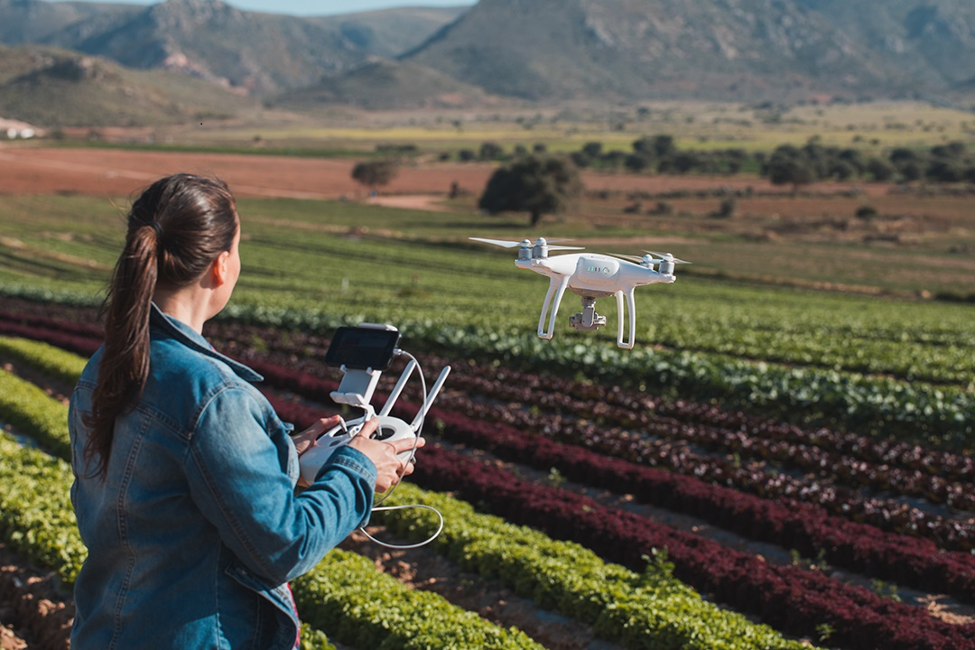By Diana Cox and Safa Hussain. In the past five years, UC campus students and staff—from engineering students to agricultural researchers to facilities personnel—have flown over 3,300 drone flights and logged over 2,100 flight hours in the skies above campuses and in the field. The safety of these flights and the collected statistics are made possible because of Risk and Safety Solutions’ (RSS) Unmanned Aircraft Systems (UAS) management software, known simply as “Drones.”
The application currently is used by nine of the ten UC campuses, as well as several external clients. It offers a convenient, online solution for more than 800 UC pilots to collect and share data about their flights with safety administrators. Pilot, aircraft, and project information is stored in the system, which eliminates manual entry and saves time when filling out a flight plan.
Needs of a Growing Technology
In 2016, the UC Center of Excellence (CoE) on UAS Safety was charged with ensuring that drones flown on UC campuses comply with Federal Aviation Administration (FAA) regulations and standards as well as UC policies. The center needed a quickly deployed, simple-to-use UAS management system that would meet all FAA requirements as well as ensure that each campus could track its drone use.
RSS was tapped to develop the solution. The results are the main Drones application, which provides a simple interface for pilots to submit and manage flight applications, and the analytics dashboard, which provides information to managers and safety coordinators who manage liability and ensure compliance. Drones achieves these goals in the following ways:
- Pilots and aircraft can be registered and searched in the system.
- New flights can be requested and existing requests or reports can be searched by status or date.
- The latitude and longitude of flight locations can be entered manually or by using the provided map, which includes filters for standard or satellite view, different controlled airspaces, and types of airports.
- Documents such as pilot certificates, flight plans, and crowd control plans can be uploaded.
- A created flight report can then be edited to indicate any changes due to weather, ground hazards, equipment malfunctions, takeoff and landing damages, and accidents.
- Flight requests or reports can be cloned for repeat flights.
The Drones dashboard provides several ways to view flights and aircraft information. The first view allows users to quickly identify the location of flights through the dashboard’s interactive map, which provides insights as to the purpose and duration of flights. The second view focuses on the aircraft; users can identify the different models along with the total number of pilots and pilot location. This data helps UC better understand how drones are being used and to ensure that campuses are adhering to drone policies and meeting state and federal requirements.
Improving Safety and Compliance
More people are using drones for campus research and facility management, and as the usage increases, so does the risk to the campus community. The RSS Drones application helps manage current risk and provides insights into future risk, while helping to maintain compliance with FAA regulations
The corresponding dashboard provides safety administrators insight into pertinent data such as who is conducting flights, where they are flying, and how often, and they can react to possible incidents or malfunctions recorded in post-flight reports. In maintaining flight records, Drones helps researchers keep a history of exact dates and times that flights were conducted.
Evolving with the Technology
The RSS Drones application has been a pillar for maintaining compliance of drone use for the past five years, and it continues to improve. The following new features are being considered for future development to further improve use and compliance:
- An updated flight map with the ability to set up custom zones for informational alerts
- FAA pre-flight approval via integration with the Low Altitude Authorization and Notification Capability (LAANC) system
- FAA UAS recreational safety training can be input and validated while completing flight requests
As use of drones increases and regulations change, the RSS Drones safety solution will continue to evolve, providing ongoing value to drone users and the communities they serve.
 Diana Cox is associate director of Business Development, Risk & Safety Solutions, UC Office of the President.
Diana Cox is associate director of Business Development, Risk & Safety Solutions, UC Office of the President.
 Safa Hussain is executive director, Risk and Safety Solutions, UC Office of the President.
Safa Hussain is executive director, Risk and Safety Solutions, UC Office of the President.

